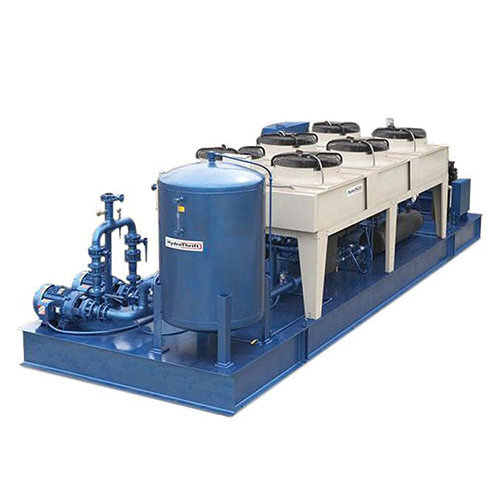Introduction
Cooling systems for machinery play a vital role and these systems are specifically designed to regulate temperature, prevent overheating, and protect sensitive components during continuous or peak performance. From small-scale workshop tools to large-scale industrial engines and hydraulic presses, cooling systems are a critical element that ensures everything runs smoothly, safely, and efficiently. Whether you’re operating CNC machines in a tool room, hydraulic systems in a factory, or compressors in a power plant — having the right cooling system in place isn’t just a matter of efficiency; it’s a matter of operational survival. In the fast-paced world of industrial manufacturing and engineering, machinery is pushed to its limits — operating under high loads, high speeds, and sometimes in extreme environmental conditions. All this activity generates intense heat, which, if left unmanaged, can lead to equipment failure, reduced efficiency, or even hazardous conditions.
What is a Cooling System for Machinery?
A cooling system is an arrangement of equipment and technologies used to remove excess heat generated by machinery during operation. This system works by transferring the heat away from critical components to a medium (such as air, water, or oil), which then carries the heat to the surrounding environment or a disposal unit.
These systems are carefully engineered based on the heat load, machinery type, operating conditions, and the required temperature stability.
Types of Cooling Systems for Machinery
Air-Cooled Systems
These systems use ambient air to cool machinery by increasing the surface area exposed to airflow using fins, radiators, or fans.
- How it works: Air is blown across heated surfaces, transferring heat into the environment.
- Common Components: Fans, blowers, radiators, and heat sinks.
- Ideal For: Small machinery, portable units, and installations where water is unavailable.
- Pros:
- Simple setup
- Low maintenance
- No water or coolant required
- Cons:
- Less efficient in high-temperature environments
- Limited cooling capacity
Water-Cooled Systems
Water or coolant absorbs heat from machinery and is circulated to a cooling tower or heat exchanger where the heat is dissipated.
- How it works: A closed or open-loop system continuously circulates cooled liquid around heat-generating components.
- Common Components: Pumps, piping, cooling towers, condensers, and tanks.
- Ideal For: High-capacity machinery, hot environments, 24/7 operations.
- Pros:
- High cooling efficiency
- Handles higher heat loads
- Cons:
- Requires water treatment
- Needs regular maintenance
Oil-Cooled Systems
Oil serves a dual function — cooling and lubricating internal machine parts.
- How it works: Heated oil is directed to an oil cooler where the heat is removed before being recirculated.
- Common in: Hydraulic presses, gearboxes, transformers, and high-speed bearings.
- Pros:
- High thermal stability
- Good for heavy-duty or high-pressure systems
- Cons:
- More expensive than air cooling
- Oil degradation over time requires monitoring
Chiller-Based Systems
Chillers offer a closed-loop refrigeration system designed to maintain a precise temperature range for critical applications.
- How it works: A refrigerant absorbs heat via an evaporator and releases it through a condenser, maintaining a stable chilled fluid loop.
- Common in: CNC machines, lasers, injection molding, and pharmaceutical manufacturing.
- Pros:
- Extremely accurate temperature control
- Compact and customizable
- Cons:
- Higher initial investment
- Requires power and regular servicing
Where Are Cooling Systems Used? (Applications)
Cooling systems are vital in a wide range of machinery and industries:
- CNC Machines – Prevents thermal expansion that affects precision
- Injection Molding – Controls mold temperature for better product quality
- Hydraulic Equipment – Prevents oil overheating and degradation
- Compressors – Ensures stable pressure and efficiency
- Power Plants – Manages turbine and generator temperatures
- Food & Beverage – Maintains hygiene standards and product safety
- Pharmaceutical & Medical – Precision cooling for sensitive environments
- Printing Industry – Keeps rollers and ink at optimal temperatures
Advantages of Installing a Proper Cooling System
- Prevents Equipment Overheating: Keeps temperatures within safe operating limits.
- Enhances Performance and Efficiency: Machines run smoother and consume less power when cooled.
- Reduces Downtime and Maintenance Costs: Stable systems require fewer emergency repairs.
- Extends Equipment Life: Lower temperatures reduce mechanical wear and corrosion.
- Improves Product Quality: Especially important in precision machining and molding processes.
Conclusion
In today’s industrial landscape, where uptime, precision, and energy efficiency are crucial to success, an effective cooling system is no longer a luxury — it’s a necessity. The right cooling setup ensures your machinery remains within optimal operating temperatures, protecting it from damage, reducing maintenance frequency, and increasing overall life span. Whether it’s a simple air-cooled solution for compact equipment or an advanced chiller system for critical temperature control, investing in a tailored cooling system helps your business maintain productivity and reliability. It also demonstrates a commitment to safety, quality control, and long-term cost savings.

